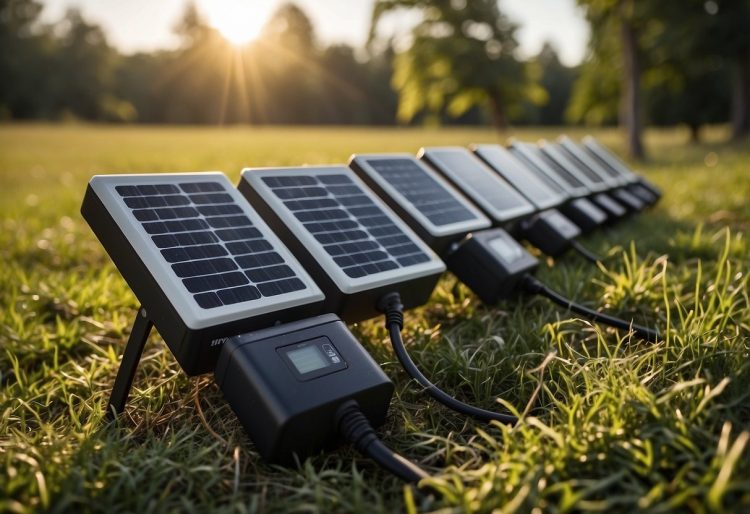Introduction: The Rise of Sustainable Technology in Consumer Gadgets
As climate change becomes an increasingly urgent global issue, individuals and industries alike are turning toward more sustainable solutions. In the tech world, innovation is not just about enhancing performance but also about reducing the environmental impact of the products we use. In 2025, eco-friendly technology is poised to play a central role in consumer electronics, with products designed to lower carbon footprints, minimize waste, and use resources more efficiently.
The rise of sustainable technology in consumer gadgets marks a significant shift towards environmental responsibility, with companies striving to create products that not only perform well but also contribute to the long-term health of the planet. From solar-powered chargers to biodegradable devices, the tech industry is focusing on developing greener solutions that empower consumers to make a positive impact on the environment without compromising on convenience or functionality.
This article will explore 10 must-have eco-friendly tech products for 2025, showcasing how green gadgets are making a real difference in reducing energy consumption, promoting sustainability, and shaping a cleaner, healthier future.
Solar-Powered Chargers: Eco-Friendly Power Solutions for Everyday Devices
One of the most practical and impactful green gadgets for 2025 is the solar-powered charger. As reliance on portable devices grows, so does the need for sustainable charging solutions. Solar-powered chargers use renewable energy to power smartphones, tablets, laptops, and other devices, making them ideal for those seeking to reduce their carbon footprint while staying connected.
Solar chargers can be used at home, in the office, or while traveling. They work by harnessing sunlight through solar panels and converting it into electrical energy, eliminating the need for traditional electricity grids. The beauty of solar-powered chargers lies in their versatility and eco-friendliness, offering a zero-emission alternative to conventional charging methods. With advancements in solar panel technology, these chargers are becoming more efficient and portable, with designs that integrate seamlessly into daily life.
As more people embrace the idea of sustainable living, solar-powered chargers are becoming a must-have gadget for anyone looking to reduce their energy consumption and take advantage of clean, renewable energy.
Recycled Material Tech: Gadgets Made from Sustainable Materials
As consumers become more environmentally conscious, demand for products made from recycled materials has skyrocketed. In 2025, many of the most innovative tech gadgets will be crafted from sustainable materials such as recycled plastics, metals, and even biodegradable substances. Recycled material tech not only helps reduce waste but also lowers the environmental impact of manufacturing, which is one of the largest contributors to pollution.
For example, several smartphone manufacturers have started using recycled aluminum and plastics in their device construction, significantly reducing the need for new raw materials and cutting down on carbon emissions. Similarly, laptop makers and tech accessory brands are incorporating post-consumer recycled materials into their products, making them more sustainable without sacrificing quality or design.
By purchasing gadgets made from recycled materials, consumers are actively contributing to the circular economy, which promotes the reuse and recycling of materials to reduce the need for extraction and waste production.
Energy-Efficient Smart Devices: Cutting Energy Consumption Without Sacrificing Performance
In an age where energy consumption is a critical issue, the demand for energy-efficient smart devices has never been greater. Smart devices, such as thermostats, lights, and home assistants, that use minimal energy while delivering high performance are among the most important eco-friendly gadgets of 2025.
The latest generation of energy-efficient smart devices leverages cutting-edge technologies, like low-power sensors and AI-driven optimization, to reduce electricity usage. For example, smart thermostats like the Nest Learning Thermostat intelligently adjust heating and cooling based on user behavior and environmental conditions, minimizing energy waste and lowering utility bills. Similarly, smart lighting systems automatically adjust brightness or turn off when not in use, further reducing energy consumption.
These devices not only lower household energy usage but also help users save money in the long run. By choosing energy-efficient smart devices, consumers can play an active role in reducing their carbon footprint while enjoying the convenience and automation that comes with modern technology.

Eco-Friendly Wearables: Sustainable Materials in Fitness Trackers and Smartwatches
Wearables, including fitness trackers and smartwatches, have become indispensable tools for monitoring health, fitness, and productivity. As these gadgets continue to evolve, sustainability has become a key focus in their design and manufacturing. In 2025, many of the most popular wearables will be made from eco-friendly materials, designed to reduce waste and minimize their environmental impact.
Eco-friendly wearables include devices made from recycled plastics, plant-based materials, and even metals sourced from sustainable mines. Additionally, many wearables now feature energy-efficient batteries that require less power and can be recycled more easily.
Examples of eco-friendly wearables include fitness trackers that use recycled ocean plastics or biodegradable watch straps made from sustainable materials. By choosing wearables made from eco-conscious materials, consumers can reduce their environmental impact while maintaining an active and healthy lifestyle.
Biodegradable Tech: The Rise of Tech Products Designed to Reduce Electronic Waste
Electronic waste (e-waste) is one of the fastest-growing environmental problems in the world. As technology advances, old gadgets quickly become obsolete, contributing to growing piles of e-waste that are often difficult to recycle and harmful to the environment.
In response to this issue, 2025 will see an increase in biodegradable tech products—gadgets designed to break down naturally when disposed of. Biodegradable tech aims to address the problem of e-waste by using materials that can safely decompose over time, reducing the need for landfills and preventing harmful chemicals from leaching into the soil.
Some of the most promising biodegradable tech products include smartphone cases, headphones, and even laptop components made from plant-based plastics and other biodegradable substances. These products offer an eco-friendly alternative to traditional electronics, allowing consumers to enjoy the benefits of technology without contributing to the growing problem of e-waste.
Sustainable Home Automation: Green Solutions for Smarter, More Efficient Homes
Home automation is a booming industry, and in 2025, sustainable home automation systems will be at the forefront of eco-friendly technology. These systems aim to make homes more energy-efficient, environmentally conscious, and sustainable by incorporating smart technology that minimizes energy use, reduces waste, and promotes greener living.
Sustainable home automation products include smart energy management systems that optimize power usage, solar-powered smart devices that reduce dependence on grid electricity, and water-saving technologies like smart irrigation systems. These systems allow homeowners to control their energy consumption, water usage, and even waste production through a simple interface, creating a more efficient and sustainable living environment.
In the future, homes equipped with sustainable automation technology will become more common, contributing to the reduction of carbon emissions and energy waste while enhancing the comfort and convenience of everyday life.
Conclusion: How Green Gadgets Are Contributing to a Cleaner, Healthier Planet
As we approach 2025, the rise of green gadgets marks a pivotal moment in the evolution of technology. With consumer demand for sustainable products at an all-time high, the tech industry is responding by creating innovative, eco-friendly gadgets designed to reduce environmental impact and promote sustainability. Solar-powered chargers, recycled material tech, energy-efficient smart devices, eco-friendly wearables, biodegradable tech, and sustainable home automation are just a few examples of how technology is being harnessed to build a cleaner, healthier planet.
The growing availability and accessibility of green gadgets signal a promising future where technology not only enhances our lives but also contributes to the preservation of our planet. As consumers continue to embrace sustainability, these eco-friendly tech products will play an increasingly important role in shaping a more sustainable and responsible digital future.
By choosing green gadgets, individuals can make a tangible impact on the environment, reducing waste, conserving energy, and promoting a more sustainable way of life. As we move into 2025 and beyond, green gadgets will be at the heart of a global movement toward cleaner, smarter, and more eco-conscious living.












































Discussion about this post